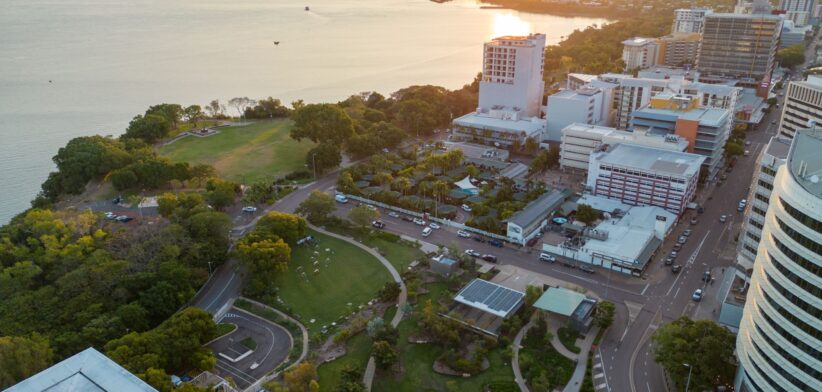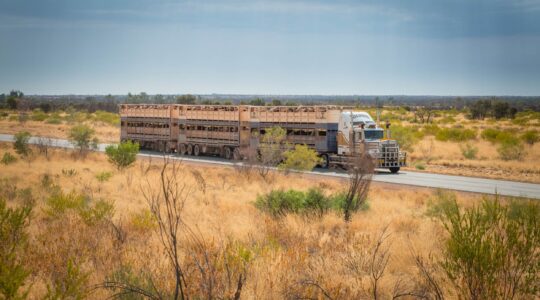Australians sweltering through sticky summer nights have a new tool which will help them lower heat stress in their specific suburb.
The CSIRO has developed a new portal for Darwin residents which allows them to assess the heat exposure of their neighbourhood and identify solutions to lower their heat stress.
CSIRO Senior Environmental Scientist Stephen Cook said, although initially focused on Darwin, insights from the project would be applied to other regions throughout Australia.
Mr Cook said the new interactive tool would help make the Northern Territory capital, where humid air temperatures have regularly exceeded 35 degrees this summer, a more liveable, sustainable and resilient city.
He urged Darwinites to use the new Darwin Living Lab portal to help manage the impact of rising temperatures.
“Residents can use the portal to zoom in on their local areas, assess their heat exposure, and find solutions like planting more trees around their homes or painting their roof a lighter colour.
“Urban planners can also use it to explore how city features like tree cover, green spaces, and urban density influence heat levels across suburbs.”
Mr Cook said rising temperatures in urban environments across the country were causing increased heat stress, higher energy demands for cooling, and greater risks to public health, particularly for vulnerable populations.
He said CSIRO scientists were using the portal to analyse where Darwin could improve on the 3-30-300 guideline for tree canopy, devised by Dutch urban forestry expert Cecil Konijnendijk.
The guideline states every house, school and workplace should have a view of at least three trees, be in a neighbourhood with at least 30 percent canopy cover, and be within 300 metres of high-quality public green space.
“It’s a new metric that’s emerging based on what’s considered adequate urban tree cover for people to actually benefit,” Mr Cook said.
“It’s also about the mental well-being aspects around having visibility and proximity to greenery.”
CSIRO Urban Living Labs leader Tim Muster said Australian cities were considered among the most liveable in the world, but were becoming vulnerable to extreme climate, consume immense resources and generate a lot of waste.
“Transitioning our cities to be future ready is critical,” Dr Muster said.
“The Urban Living Labs aim to develop and accelerate outcomes in liveability, sustainability and resilience for national benefit.”
Visit the Darwin Living Lab portal.
Top tips for keeping cool in tropical cities:
1. Find the shade:
Shaded surfaces have temperatures up to 21.2°C cooler than sun-exposed surfaces, which reduces the urban heat island effect. Standing in the shade can make you feel up to 5°C cooler compared to the full sun. Trees are particularly good at creating shade, and they also cool via evapotranspiration (drawing up water from deep in the soil long into the dry season). Shading of your home, particularly windows, with eaves, external blinds and trees can reduce solar gain, keeping indoors cooler and reducing energy demand for air conditioning. Trees take time to grow and they cannot be planted everywhere. Installing engineered shade or the use of green walls with climbing plants can also be good options.
2. Build for breeze:
Breezes can help you stay cooler through increased evaporation of sweat and can help flush out the build-up of heat in the urban landscape. Urban and building design should allow for prevailing breezes to flow through the urban landscape. In the evening, opening windows of your home on the windward and leeward sides can encourage cross ventilation and help heat loss.
3. Keeping it light in colour:
Light colours reflect solar heat. Choosing light-coloured (cool) roofs can help reduce the cooling load to your home.
4. Let’s get energy efficient around humidity:
The humidity is a real challenge to staying cool during the build-up and wet seasons. While most tropical households use air conditioners to maintain comfort during the hottest months of the year, the increased energy demand increases pressure on bills while also contributing to greenhouse gas emissions. The use of fans, even during periods of high humidity, can improve your thermal comfort and reduce air conditioning use. Increasing the set temperature of air conditioners to 24-26°C and during the wet season running in dry mode can help reduce energy demand for cooling.








